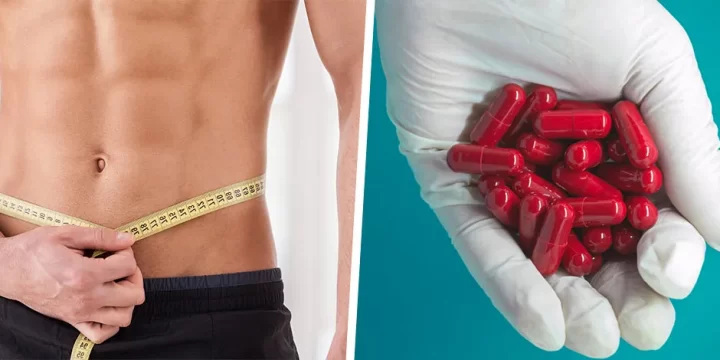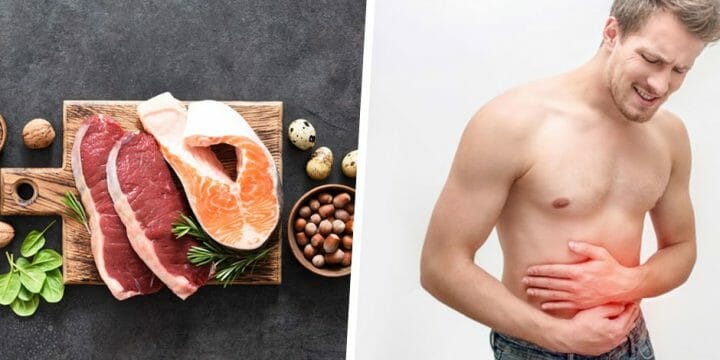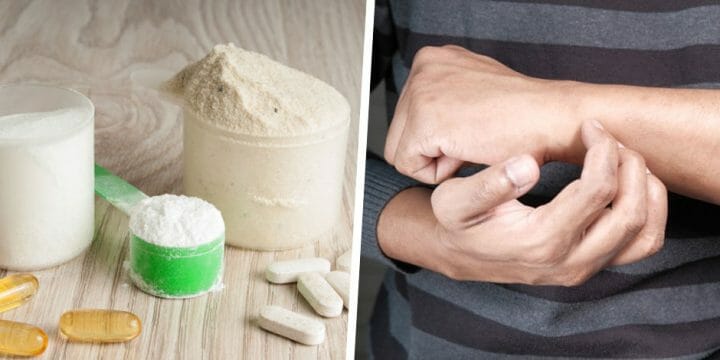Protein has a complex structure and is made up of so-called monomers. But what are those monomers? And why does it even matter?
Well, knowing the structure of a protein can help you better understand why it’s so crucial for your health and fitness goals.
I’ve spent hours researching the science behind proteins to help you out. Here’s what I discovered about its monomers, structure, and roles in the body.
Quick Summary
- The monomer, or the basic unit of a protein, is an amino acid.
- The specific order of amino acids in each protein defines its distinct shape and function within your body.
- The body needs 20 different amino acids to function properly, combining in various ways to create proteins.
- As a doctor, I advise my patients who are into fitness to eat foods with high amounts of protein and consider high-quality protein supplements.
What Is the Basic Unit for Proteins?
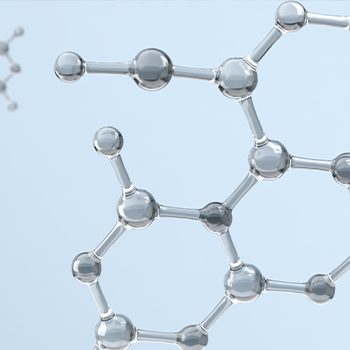
The basic unit for proteins is called amino acids, according to research from the European Bioinformatics Institute [1].
Amino acids serve as the fundamental building blocks of proteins. According to the Cleveland Clinic, proteins consist of lengthy chains of these amino acids.
Within your body, there exist thousands of distinct proteins, each assigned essential roles. The unique sequence of amino acids in each protein dictates its specific shape and function within your body [2].
The Structure of an Amino Acid
An amino acid is an organic compound characterized by carbon-hydrogen bonds. All amino acids share a common basic structure, with each molecule featuring a central carbon atom connected to the following groups:
- Basic amino group (–NH2)
- A carboxyl group (–COOH)
- A hydrogen atom
- An R-group or side chain group
Research from Oregon State University indicates that the carboxyl group imparts acidity, contributing to the name of amino acids (amino group + acidic group = amino acid).
Therefore, every amino acid will consist of a carboxyl group, an amino group, and a single hydrogen atom.
What sets one amino acid apart from another is the R group, a variable atom or group of atoms that dictates the chemical nature of a protein—determining whether it will be acidic, basic, polar, or nonpolar [3].
What Are the Types of Amino Acids?
Research from the National Institute of Health indicates that your body requires 20 different amino acids to function properly, combining in various ways to create proteins [4].
Nine of these are essential amino acids, meaning your body can't produce them and you must obtain them from your diet. These are histidine, isoleucine, leucine, lysine, methionine, phenylalanine, threonine, tryptophan, and valine.
The remaining 11 amino acids are nonessential, and your body produces them. These include alanine, arginine, asparagine, aspartic acid, cysteine, glutamic acid, glutamine, glycine, proline, serine, and tyrosine.
Difference Between Complete and Incomplete Proteins
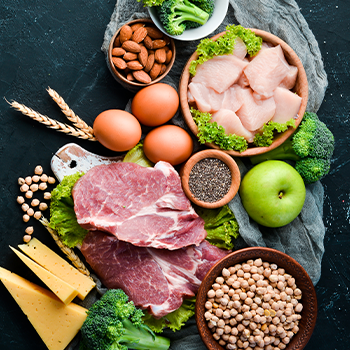
Complete proteins differ from incomplete proteins based on the presence and type of amino acids:
According to WebMD, complete proteins contain all nine essential amino acids. These are the amino acids your body can’t produce on its own. Poultry, eggs, fish, and chia seeds are just some examples of complete proteins.
On the flip side, incomplete proteins may contain some but not all essential amino acids. Incomplete proteins are present in plants, such as lentils, peas, and beans [5].
5 Important Roles of Proteins in the Body

Proteins serve crucial roles in living organisms, such as acting as antibodies or functioning as enzymes. Now, let's focus on their essential functions.
1. Proteins Provide Structure
According to research from the National Institute of health, proteins such as collagen, keratin, and elastin provide structural support for cells and tissues, keeping your body together [6].
Related: Best Collagen Supplement
2. Proteins Help You Grow and Maintain Tissue
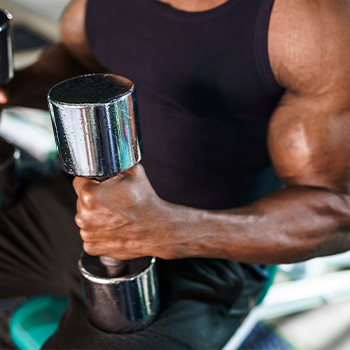
According to research published by the National Institute of Health, your body relies on protein for tissue growth, muscle building, and maintenance. Additionally, as your body consistently breaks down protein, it becomes crucial to get more proteins through food or protein supplements [7].
But keep in mind that proteins alone won’t lead to muscle growth, as per WebMD [8]:
“Adding more protein but not more calories or exercise to your diet won't help you build more muscle mass, but it may put your other bodily systems under stress.”
- Gail Butterfield, Ph.D., RD, Director of Nutrition Studies at the Palo Alto Veterans' Administration Medical Center
So, don’t expect miracles from proteins. You’ll still need to exercise and watch your diet if you want visible results.
3. Proteins Transport Nutrients
Proteins transport substances like vitamins and minerals through your bloodstream, ensuring every cell receives sufficient nutrients for proper function. Additionally, some proteins serve as storage for specific substances, such as ferritin, which stores iron [9].
4. Proteins Boost Your Immune System

Research from ScienceDirect suggests that proteins function as antibodies, aiding in the fight against infections. When your cells are attacked by a virus, your body produces a protective protein known as immunoglobulin. Without it, the body would struggle to defend against viral attacks [10].
5. Proteins Lead To Biochemical Reactions
According to MedlinePlus, enzymes are proteins that catalyze chemical reactions, interact with molecules inside and outside the cell, enabling various essential functions in our body, such as digestion, blood clotting, muscle contraction, and energy production [11].
References:
- https://www.ebi.ac.uk/training/online/courses/biomacromolecular-structures/biomacromolecular-structures/
- https://my.clevelandclinic.org/health/articles/22243-amino-acids
- https://files.mtstatic.com/site_4463/10975/0?Expires
- https://www.ncbi.nlm.nih.gov/books/NBK557845/
- https://www.webmd.com/diet/difference-between-complete-and-incomplete-proteins
- https://www.ncbi.nlm.nih.gov/books/NBK555990/
- https://pubmed.ncbi.nlm.nih.gov/20048505/
- https://www.webmd.com/fitness-exercise/default.htm
- https://academic.oup.com/plcell/article/11/4/661/6008497
- https://www.sciencedirect.com/topics/medicine-and-dentistry/protein-antibody
- https://medlineplus.gov/genetics/understanding/howgeneswork/protein/
About The Author
You May Also Like
